Global spending on public cloud services is expected to reach $723.4 billion in 2025, up from $595.7 billion in 2024, according to Gartner. And startups? You’re not just part of that number; you’re the ones scaling fast, shipping faster, and often paying the price for both in your monthly cloud bill.
Here’s the truth: most early-stage teams don’t overspend on cloud because they’re reckless. They do it because they’re building fast, breaking things (sometimes budgets), and juggling product milestones with barely enough time to eat lunch.
But those surprise charges? That creeping line item that grows every sprint? It adds up, and it hits your runway.
The startup cloud cost optimization isn’t just a finance problem anymore. But it is:
- A DevOps problem.
- A founder problem.
- A growth problem.
And that’s exactly where FinOps comes in: a practical framework that brings cost accountability into your engineering culture without slowing you down.
This guide explains how to incorporate cost awareness into your engineering workflows without slowing down innovation. You will discover cost optimization techniques that not only save money but also grow with your company, from tagging and automation to dashboards and budgets.
Additionally, you will learn how startups can reduce cloud costs with DevOps and move from reactive firefighting to proactive financial operations that lead to more intelligent engineering and financial decisions.
Continue reading to learn how to stop burning cash in the cloud!
Table of Contents
What is FinOps? And Why Should Startups Care?
FinOps, short for Financial Operations, is a cloud cost management approach that promotes financial accountability across engineering, finance, and business teams. It helps teams make informed decisions about cloud usage instead of reacting to bloated bills after the fact.
Startups are especially vulnerable to cloud overspending. According to Flexera’s 2025 State of the Cloud report, companies waste over 27% of their cloud budgets on unused or idle resources. For startups with limited funding and investor pressure to show ROI, that kind of inefficiency can be the difference between scaling and stalling.
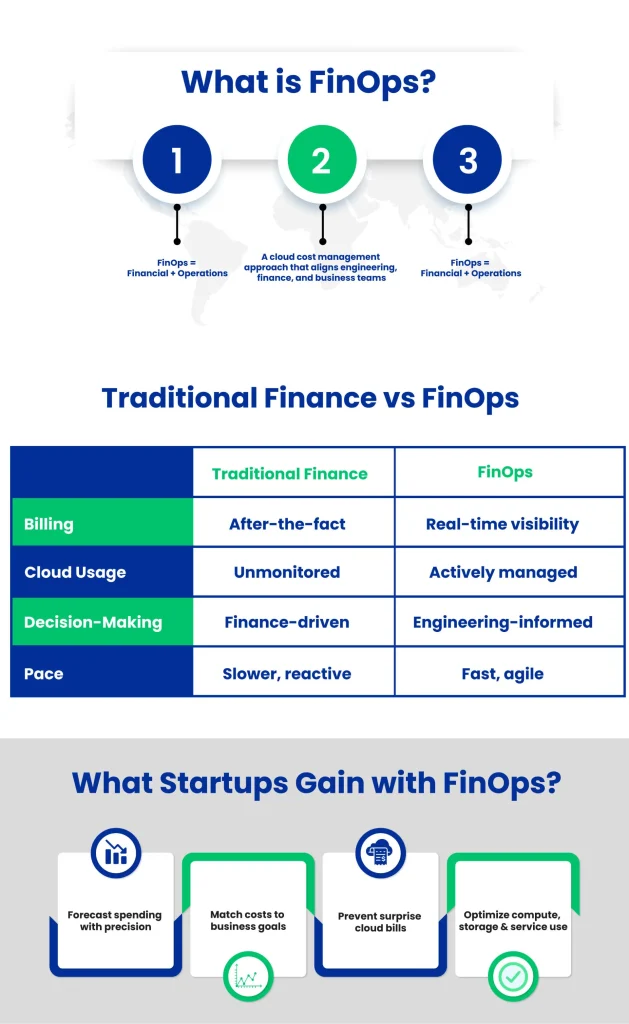
FinOps offers a way out.
Unlike traditional finance models, FinOps thrives in dynamic, cloud-native environments. It brings cost visibility, budget predictability, and resource optimization into daily DevOps practices without slowing product development. Instead of waiting for monthly invoices, engineering teams get real-time cost data they can act on.
When engineering teams understand the financial impact of their infrastructure decisions, they can prioritize resource optimization, turning waste into opportunity.
With FinOps, startups can:
- Track and forecast cloud spending accurately
- Align budgets with business goals
- Optimize usage across compute, storage, and services
- Prevent billing surprises before they happen
In short, it shifts the conversation from “What did we spend?” to “Why did we spend it, and how can we improve?”
With the increasing complexity of cloud infrastructure in 2025, FinOps makes sure that rapid expansion doesn’t result in unmanageable expenses. FinOps adoption is not only wise but essential for any startup growing on AWS, GCP, or Azure.
When done correctly, it provides you with the knowledge and authority to make growth-oriented investments with assurance and avoid being caught off guard by erratic cloud expenses.
Common Mistakes Startups Make With Cloud Spending
Startup teams often dive into cloud infrastructure with speed, but not always with strategy. While the cloud enables agility, missteps in cloud cost management can quietly inflate bills and drain budgets fast. Here are five frequent mistakes to watch for:
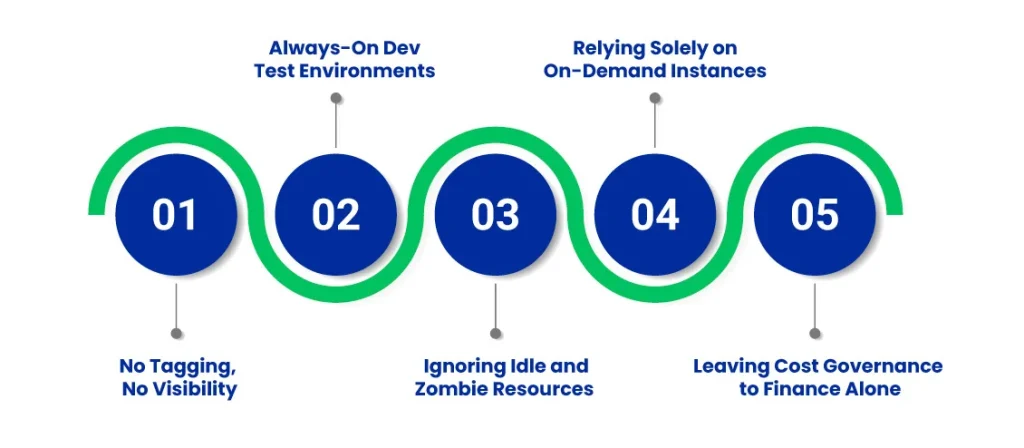
- No Tagging, No Visibility: Failing to tag resources by project, environment, or team leaves engineering leaders flying blind. Without tagging, it’s nearly impossible to trace spend back to a feature or team, making cost accountability a guessing game.
- Always-On Dev/Test Environments: Development and testing environments that run 24/7 often go unused for hours or even days. If your dev instances are idle 65% of the time, and you’re spending $5,000 monthly on them, that’s $3,250 wasted every month.
- Ignoring Idle and Zombie Resources: Orphaned volumes, unused load balancers, and idle VMs add up. Regular cleanup routines can save thousands. Even a single idle instance at $0.20/hour costs over $140/month if left unchecked.
- Relying Solely on On-Demand Instances: Using only on-demand pricing without exploring Reserved Instances or Savings Plans means missing out on significant discounts, up to 72% in some cases.
- Leaving Cost Governance to Finance Alone: When finance teams handle cloud budgeting without engineering context, tradeoffs go unexplored. Engineers must take ownership of spending to tie cost to architecture decisions.
Cloud Spend Getting Out Of Hand?
Most startups overspend by 20–40% without realizing it. Our team helps startups identify invisible cost drivers and fix inefficiencies before they spiral.
How DevOps Drives Effective Cloud Cost Management with FinOps?
Faster releases aren’t the only benefit of DevOps, but you can also use DevOps services to manage cloud costs, particularly for startups with limited funding and intense growth pressure.
DevOps contributes to the development of a culture where teams do more than just build and ship; they also track, evaluate, and control their cloud expenditures by integrating financial accountability into routine engineering processes. This close alignment between technical practices and financial goals is what makes FinOps work in the real world.
The following DevOps practices are key to turning that alignment into action:
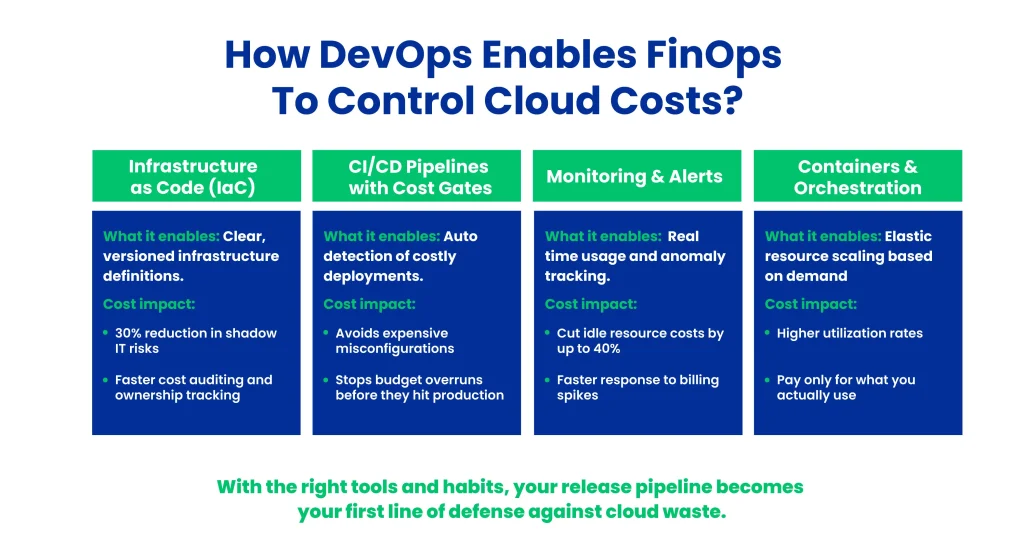
- Infrastructure as Code: Visibility from Day One
With Infrastructure as Code (IaC), cloud engineering teams define infrastructure in version-controlled templates. This transparency allows finance and engineering to track what’s running, who launched it, and why. It reduces shadow IT and provides a clear map of where cloud dollars are going. - CI/CD Pipelines: Automating Cost-Aware Deployments
Automated CI/CD pipelines make it easier to deploy quickly, but they can also help flag cost anomalies early. Integrated cost checks within the pipeline ensure that high-cost configurations or unnecessary resources are caught before reaching production, improving both cloud cost management and operational stability. - Monitoring & Alerts: Real-Time Accountability
DevOps teams rely on monitoring tools like Prometheus, Datadog, or CloudWatch. These tools don’t just detect system health; they also surface cloud spending patterns. With custom alerts on resource usage spikes or idle instances, teams can fix inefficiencies before they become financial drains. - Containerization: Efficient Scaling
Containerization and orchestration tools like Docker and Kubernetes help startups use only the resources they need. This enables autoscaling and improved workload distribution, resulting in significant cloud optimization and lower costs under dynamic loads.
DevOps-Driven FinOps Practices for Startups: 5 Strategies for Cloud Cost Management
Cloud spending can spiral quickly, especially for startups scaling rapidly. Consequently, aligning DevOps workflows with financial operations is essential. Thus, startups that combine DevOps principles with FinOps practices in 2025 can bring predictability and accountability to cloud cost management while maintaining development velocity.
Below are the 5 FinOps-DevOps practices for cloud savings in 2025 that every startup should implement and they can keep cloud spending efficient, visible, and under control.
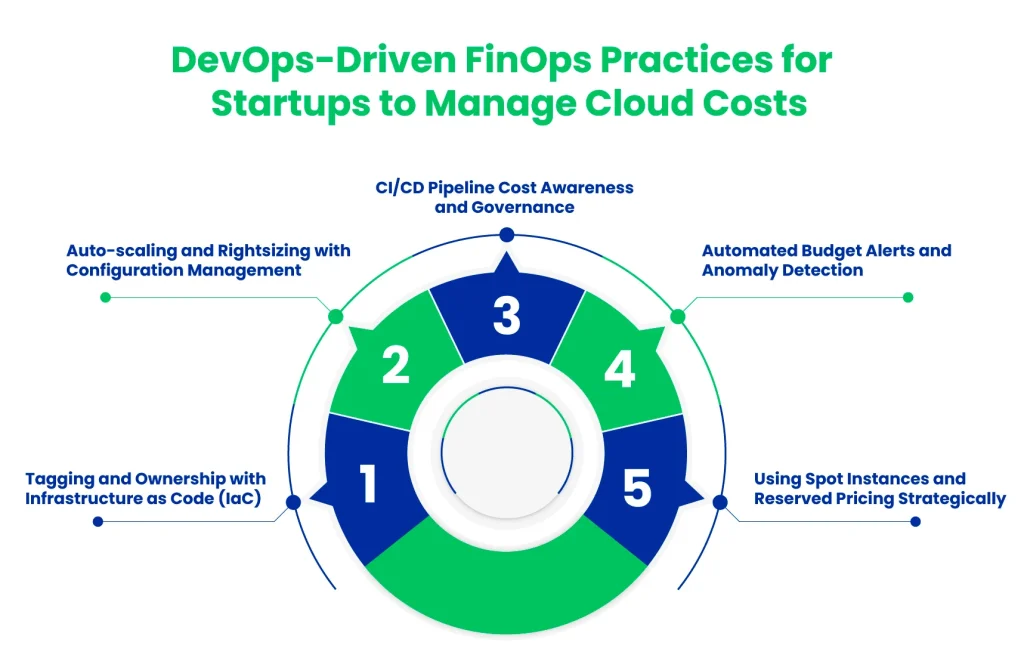
1. Tagging and Ownership with Infrastructure as Code (IaC)
Untracked cloud resources are a silent budget killer. One of the first steps toward effective cloud cost management is implementing a consistent tagging strategy using Infrastructure as Code (IaC). Tools like Terraform or Pulumi can programmatically enforce tags across all cloud deployments.
Tags should cover:
- Team (e.g., dev, marketing)
- Environment (e.g., prod, staging)
- Project or Feature
With automated tagging policies in your IaC repositories, every resource is traceable to a responsible party. This enables teams to break down cloud bills by owner and use that data for accountability and planning.
To take it further, generate automated Slack or email cost reports based on tags. These weekly or daily insights help teams see their spending in near real-time, encouraging proactive cost behavior without waiting for the month-end finance report.
Pro Tip: You can even take this a step further by integrating tagging audits into your CI pipelines, so any deployment missing required tags is automatically flagged or rejected, helping enforce accountability before resources ever reach production.
2. Auto-scaling and Rightsizing with Configuration Management
Auto-scaling is a standard DevOps capability, but it’s often underused in FinOps strategies. For startups, over-provisioned resources waste valuable budget. Using tools like Kubernetes Horizontal Pod Autoscaler, Terraform, or Pulumi, teams can configure infrastructure to scale up or down based on demand.
Here’s how to do it right:
- Monitor CPU and memory metrics to define intelligent scaling thresholds.
- Set minimum and maximum instance counts to control scale events.
- Analyze usage trends every sprint to manually rightsize long-running instances.
Rightsizing should not be a one-off task. Build a process into your sprint retrospectives or monthly ops reviews. Over-provisioning often results from conservative estimates, so let data dictate your resource choices.
This isn’t just theory; Flexera’s 2025 State of the Cloud Report indicates that 27% of cloud spend is wasted, largely due to over-provisioned resources. That’s why making rightsizing a recurring part of your DevOps cycles is so important.
3. CI/CD Pipeline Cost Awareness and Governance
DevOps workflows drive speed, but they can also drive costs if left unchecked. One of the most impactful FinOps practices is to embed cloud cost estimates directly into your CI/CD pipelines.
You can achieve this by:
- Adding cost annotations in pull requests (using Terraform Cloud or Infracost).
- Displaying cloud cost breakdowns on deployment dashboards.
- Using policy-as-code tools like Open Policy Agent (OPA) to flag or block costly infrastructure changes.
For example, if a developer tries to deploy a GPU instance without business justification, the pipeline can flag it and block the merge.
Result: Developers stay aware of cost implications without needing a finance background.
This practice promotes cost-conscious engineering by making pricing data visible and relevant during development, where changes actually happen.
4. Automated Budget Alerts and Anomaly Detection
Startups need real-time feedback, not end-of-month surprises. That’s where automated budget alerts and anomaly detection come into play. Create budgets for each service or team using your cloud provider’s billing APIs (e.g., AWS Budgets, GCP Cloud Billing, or Azure Cost Management).
Then, integrate these alerts into existing DevOps dashboards:
- Grafana + Cloud Billing APIs for live monitoring
- Slack or Teams notifications when usage exceeds thresholds
- ML-based anomaly detection tools like AWS Cost Anomaly Detection or GCP’s Recommender API
Set alerts based on:
- Daily or weekly spend thresholds
- Percentage change in cost over a period
- Unexpected spikes on specific tags or services
When alerts are integrated into DevOps tooling, engineers can respond quickly, often before costs escalate. This tight feedback loop ensures cost accountability stays part of the dev lifecycle.
5. Using Spot Instances and Reserved Pricing Strategically
Startups looking to stretch every dollar should explore automated use of spot instances and reserved pricing models. Spot (or preemptible) instances offer deep discounts, up to 90%, but with the caveat of termination with short notice.
To manage this risk:
- Use Kubernetes node pools or auto-scaling groups that prioritize spot instances for stateless workloads.
- Set up fallbacks to on-demand if spot capacity dries up.
For stable, long-term workloads, reserved instances can offer significant savings. The key is tracking usage patterns:
- If a VM runs 24/7 for 6+ months, it’s likely a candidate for a reserved instance.
- Use cloud-native tools or third-party platforms like CloudHealth or Zesty to calculate ROI on reservations.
If you’re running workloads 24/7, look into reserved pricing options. Google Cloud estimates you could save up to 57% compared to on-demand usage, especially when backed by usage trend data.
Therefore, automating the selection and usage of these pricing models can prevent overspending without adding manual overhead.
Remember: Visibility drives accountability, and automation drives consistency. Together, they form the foundation of a sustainable cloud cost strategy.
Top 15 FinOps Tools for Startups
One of the common challenges faced by startups operating in cloud-native environments is how to control rising cloud costs without stifling creativity. FinOps facilitates better cloud cost management by bridging the divide between the finance and DevOps teams.
For DevOps teams, selecting the right FinOps tool means more than just monitoring spend. The ideal platform implements FinOps into CI/CD workflows directly, provides real-time cost visibility, supports infrastructure as code, and allows teams to act on anomalies before the invoice lands.
In 2025, many startups are adopting tools that support multi-cloud environments, Kubernetes workloads, and automated governance. The FinOps tools we offer support all major cloud platforms: AWS, Azure, and GCP, as well as hybrid or container-based infrastructure.
The best FinOps tools for DevOps cloud cost control teams are listed below; they include a variety of enterprise-grade, cloud-native, and startup-friendly platforms that will help your company stay ahead of cloud spending trends.
| SR. NO. | Tool | Cloud Support | Key Features | DevOps Integrations | Best For | Pricing Model |
|---|---|---|---|---|---|---|
| 1 | CloudHealth | AWS, Azure, GCP | Multi-cloud usage visibility and governance | CI/CD, APIs | Mid- to large startups | Tiered, contact sales |
| 2 | Cloudability (Apptio) | AWS, Azure, GCP | Showback, forecasting, cost reporting | Kubernetes, policy-as-code | SaaS and finance-focused startups | Tiered, custom pricing |
| 3 | Spot.io | AWS, Azure, GCP | Workload automation, spot instance mgmt | Auto-scaling, APIs | Compute-intensive teams | Pay-as-you-save |
| 4 | Kubecost | Kubernetes | Cluster-level cost tracking, rightsizing | Prometheus, Helm, CI/CD | K8s DevOps teams | Free + enterprise |
| 5 | Harness CCM | AWS, Azure, GCP | Budgeting, anomaly detection, and GitOps governance | Pipelines, GitOps | Delivery pipelines | Tiered, free tier |
| 6 | nOps | AWS | Compliance, real-time cost monitoring | Slack, Jira, GitHub | Cloud-first startups | Usage-based |
| 7 | CloudZero | AWS, Azure | Unit cost metrics, team-based spend insights | CI/CD, CLI | Engineering-led orgs | Tiered, contact sales |
| 8 | Zesty | AWS | Auto-purchasing of reserved instances | No-code automation | RI optimization | % of savings |
| 9 | Finout | AWS, Azure, GCP | AI-based auto-scaling, cost optimization | Slack, Grafana, APIs | Cross-functional cloud teams | Tiered |
| 10 | 10. Cast AI | AWS, Azure, GCP | AI-based auto-scaling, cost optimization | Full Kubernetes automation | K8s-native teams | Free + % of savings |
| 11 | Flexera One | Multi-cloud | Governance, license management, and hybrid cloud optimization | Policy engines, APIs | Enterprises and mature startups | Tiered |
| 12 | AWS Cost Explorer | AWS | Native AWS cost visibility, forecasts, and RI insights | CloudWatch, AWS Budgets | AWS-only teams | Free (basic) |
| 13 | Azure Cost Management | Azure | Budgeting, recommendations, and usage analysis | Azure DevOps | Azure-focused startups | Free |
| 14 | Google Cloud Billing | GCP | Reports, forecasting, budget alerts | GCP Console, APIs | GCP-native teams | Free |
| 15 | ProsperOps | AWS | RI/Savings Plan automation, optimization insights | Read-only AWS integration | Cost-conscious AWS teams | % of savings |
Each tool comes with its own strengths depending on your startup’s size, cloud architecture, and operational complexity. For startups serious about cloud cost management, when evaluating tools, consider how well they fit your cloud infrastructure, team size, and existing DevOps toolchain.
Too Many FinOps Tools, Not Enough Clarity?
We’ll help you build a practical, startup-friendly tooling stack that fits your DevOps setup without burning time or money.
6 FinOps KPIs That Can Actually Cut Cloud Costs
Managing Cloud costs with FinOps and DevOps is only effective when teams are tracking the right metrics. For early-stage startups, the margin for error is small. Budgets are tight, workloads evolve quickly, and engineering velocity often outpaces financial controls.
The following six FinOps KPIs for startups help teams make smarter, data-backed decisions that improve operational efficiency and prevent wasteful spending.
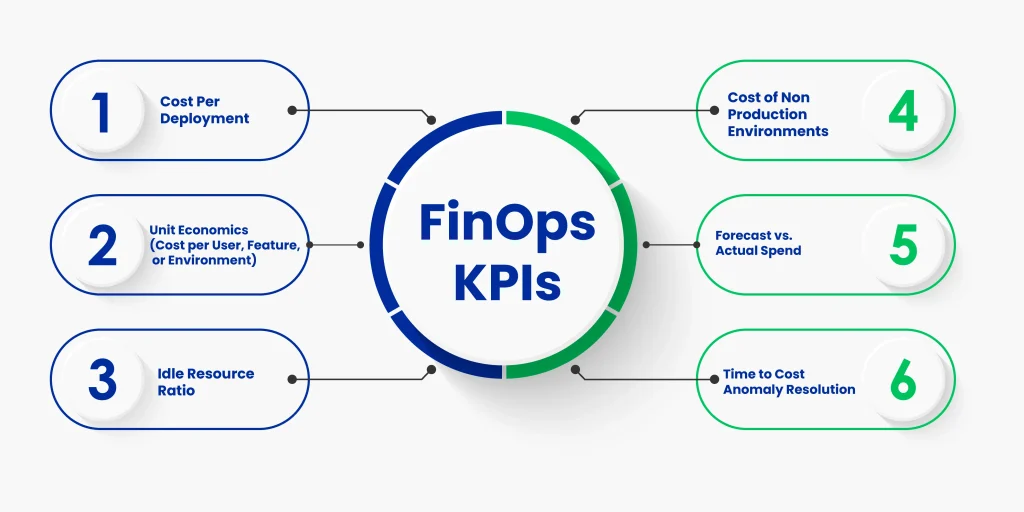
1. Cost Per Deployment
This metric measures how much each software release costs across the infrastructure. For infrastructure cost tracking, it accounts for the compute, storage, networking, and third-party services triggered during builds or deployments. While fast release cycles are ideal, they shouldn’t be financially blind.
If a startup ships code 150 times a month and each deployment consumes $8 in cloud resources, that’s $1,200 per month, often overlooked in budgets. Reducing redundant CI/CD processes or optimizing build environments can immediately lower this cost.
2. Unit Economics (Cost per User, Feature, or Environment)
Understanding the cost of delivering value, whether per user, per feature, or per team, is critical. Let’s say your cloud bill is $12,000/month and you serve 2,000 users. That’s $6/user. If your average revenue per user is $5, you’re operating at a loss. Similarly, if a low-traffic feature consumes 25% of your infrastructure costs, it might be time to refactor or retire it.
3. Idle Resource Ratio
Idle resources are cloud budget killers. This KPI reveals what portion of your cloud infrastructure sits unused. For example, if your dev and staging environments run 24/7 but are only used 40% of the time, you’re wasting up to 60% of that budget. On a $5,000/month bill, that’s $3,000 in avoidable spending. Automated shutdown policies or serverless setups can significantly cut this waste.
4. Cost of Non-Production Environments
Staging, dev, and test environments often go unchecked in early-stage startups. These non-prod setups may consume up to 40% of your total cloud costs. A dev team with four always-on environments could be burning $4,000/month just in idle infrastructure. Simple automation, like pausing environments after hours, can slash this number in half.
5. Forecast vs. Actual Spend
This KPI reflects how well your teams can predict cloud spend. If your forecast is $10,000 but your bill hits $13,000, that’s a 30% overrun. While some variance is expected, frequent or large gaps signal weak visibility and a lack of cloud budget monitoring tools. Tools like CloudHealth or Azure Cost Management can improve forecasting accuracy.
6. Time to Cost Anomaly Resolution
This tracks how quickly your team detects and resolves spending anomalies. Imagine an untagged GPU instance left running over a weekend. If it costs $200/day and remains unnoticed for 5 days, that’s $1,000 wasted. Real-time alerting and automated shutdowns help detect these anomalies early, preventing budget drain.
Simply put, startup teams can create a transparent, accountable cloud cost management practice that supports both innovation and financial sustainability by tracking these KPIs on a consistent basis. These metrics are not only for finance; engineering and DevOps teams can use them to cut waste, make smart budgetary decisions, and scale in a responsible manner.
Key FinOps Trends for Startups to Watch in 2025
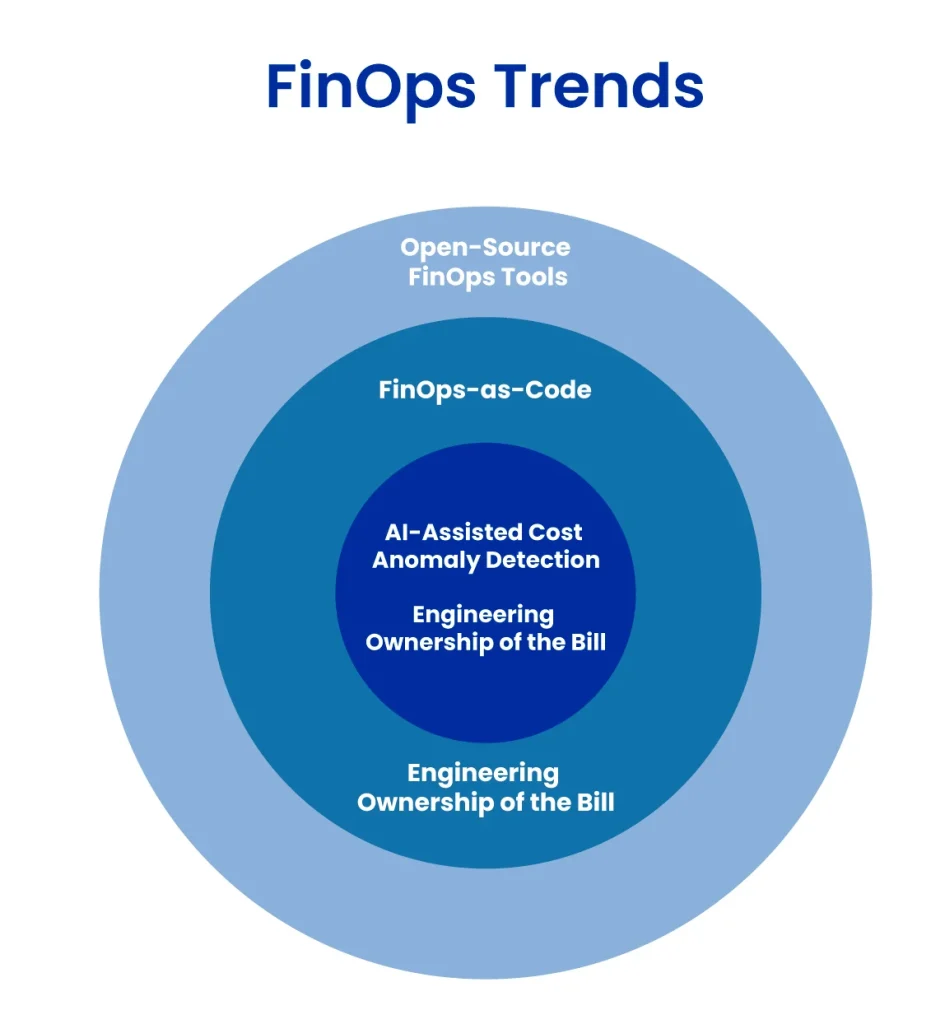
In 2025, FinOps is becoming deeply technical. Startups that embrace the following trends are better positioned to implement smarter and more agile cloud cost management practices from day one.
1. AI-Assisted Cost Anomaly Detection
Machine learning is playing a growing role in cloud optimization. AI-powered systems can now flag unusual spending patterns in real time, often within minutes. For instance, if GPU usage spikes by 300% overnight, these tools alert teams before the invoice arrives, enabling proactive cost control.
2. FinOps-as-Code Is Gaining Ground
The shift toward treating FinOps like infrastructure, codified, versioned, and automated, is making cloud cost management more scalable. Engineers are embedding budget thresholds and cost guardrails directly into Terraform, Pulumi, and other infrastructure-as-code tools, ensuring cloud cost governance for startups is part of every deployment.
3. FinOps Embedded in CI/CD Pipelines
More startups are integrating FinOps into the DevOps pipelines, such as cost visibility into their CI/CD workflows. Before code is merged, teams get automated insights into potential cost impacts. This trend reduces the risk of deploying features that may look efficient but introduce significant spending downstream.
4. Engineering Teams Are Owning the Bill
Ownership of cloud costs is shifting left. Instead of finance departments reviewing bills post-facto, DevOps and engineering leads are being held accountable for their environments. This cultural change improves transparency and speeds up optimization efforts.
5. Rise of Open-Source FinOps Tools
With growing community support, tools like OpenCost and CloudQuery are gaining traction. These give startups affordable, customizable ways to track and manage cloud spend without vendor lock-in.
Curious how your FinOps metrics stack up? Talk to us about benchmarking KPIs specific to your startup’s stage and scale.
Getting Started: FinOps Roadmap for Startups (Step-by-Step)
Launching a FinOps practice might sound complex, but startup teams can make real progress with a structured approach. This six-step roadmap lays the foundation for effective cloud cost management, helping you move from reactive firefighting to proactive budget control.
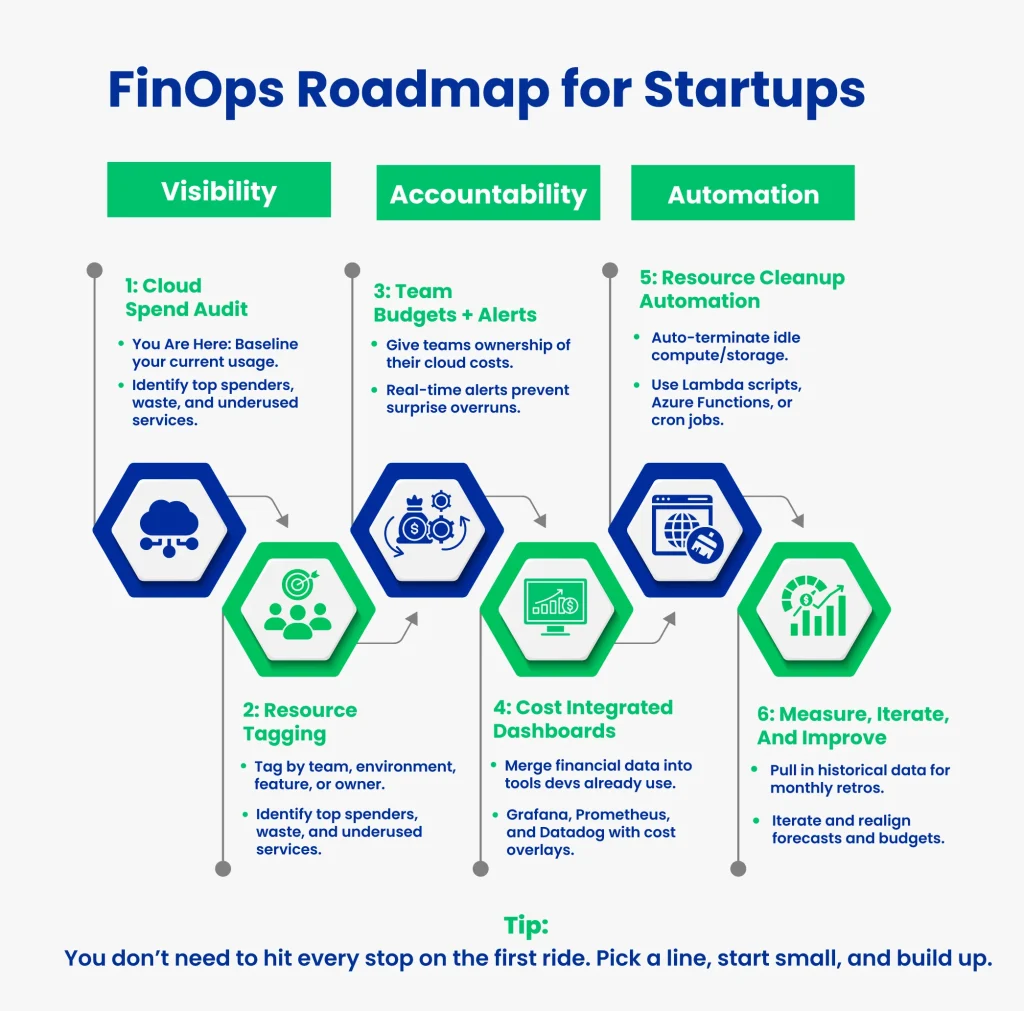
Step 1: Conduct A Cloud Spend Audit
You should start by analyzing your current cloud usage. Identify which services consume the most budget, where spending is spiking, and what’s underutilized. A spend audit reveals your cloud cost baseline and uncovers hidden inefficiencies.
Step 2: Define Resource Tagging Standards
Tagging isn’t just for organization; it’s essential for tracking usage by team, environment, or feature. Without consistent tagging, cloud cost optimization for startups becomes nearly impossible.
Step 3: Set Up Team-Based Budgets And Alerts
You must empower teams with budgets aligned to their workstreams. Pair them with real-time alerts to catch overruns before they snowball. This promotes ownership and enables informed decision-making.
Step 4: Integrate Cost Data Into DevOps Dashboards
Bring cost metrics into the same dashboards your engineers already use. You can link engineering decisions to financial impact by integrating cost monitoring into routine DevOps procedures.
Step 5: Automate Cleanup Of Unused Resources
Idle instances, unattached volumes, and outdated snapshots drain money silently. You must use automation scripts to regularly sweep and shut down unused assets for better resource management.
Step 6: Measure, Iterate, And Improve
FinOps is a feedback loop that requires ongoing setup. You can use historical data to refine your approach, improve forecasts, and tighten budget management across teams.
This roadmap can create transparent and scalable cloud financial management for startups that keeps engineering quick and budgets under control.
Final Takeaway: Turning Cloud Spending Into a Strategic Advantage
Cloud costs shouldn’t be a mystery or a moving target. For startups trying to scale, cloud cost management in 2025 is no longer optional but a strategic function that can make or break your burn rate. Your team gains control in addition to visibility when you adopt FinOps principles and incorporate intelligent DevOps practices.
Effective cloud optimization involves more than just conducting cloud cost audits; it also involves developing habits, such as tagging resources, clearing out unnecessary infrastructure, and integrating cost monitoring into your CI/CD pipelines.
Additionally, decisions become quicker, more intelligent, and data-driven when engineering and finance communicate in the same language through shared dashboards and budgets. Further, startups that bake financial operations into their technical workflows position themselves for long-term growth.
The payoff? Faster innovation, cleaner infrastructure, and the ability to scale without spiraling cloud spending.
Now is the time to take action.
- Audit your current setup
- Align your teams
- Automate wherever possible
If you want to make a real difference, consider partnering with FinOps and DevOps experts to implement these best practices and strategies effectively.
And remember: FinOps is not a one-time fix but a culture shift that pays off month after month. In other words, when you manage your cloud costs well, you can ensure your future as well.
Frequently Asked Questions (FAQs)
2. Is FinOps Only For Large Companies?
Not at all. In fact, FinOps can be even more critical for startups, where budgets are tight and burn rate directly affects survival. Startups often scale cloud usage quickly, and without cloud cost management in place, this can lead to massive overspending. FinOps brings accountability early, helping teams make smarter decisions about cloud resource allocation, tool usage, and cloud architecture before inefficiencies become expensive.
3. What FinOps Tools Work With Kubernetes?
Several FinOps platforms now offer Kubernetes-native cost visibility. Tools like Kubecost, Cast.ai, CloudZero, and Finout integrate with Kubernetes to break down costs by namespace, pod, deployment, or service.
With the aid of these tools, startups managing containerized workloads can more easily implement cost optimization techniques within DevOps pipelines by identifying the precise locations of cloud spending, such as idle workloads or over-provisioned nodes.
4. How Do You Get Engineers To Care About Cloud Costs?
Make cloud cost data visible, timely, and relevant to their workflow. Instead of relying on monthly finance reports, give engineers real-time dashboards, Slack alerts, or CI/CD cost checks. Tie cloud spending back to features or environments they manage. Further, framing it as performance or efficiency (instead of just dollars) can resonate more; engineers care deeply about doing things well; they just need the right data at the right time.
5. How Much Can A Startup Save With Effective Cloud Cost Management?
Startups adopting FinOps practices early often see 20–40% reductions in unnecessary cloud spending within the first 3–6 months. Savings typically come from rightsizing instances, eliminating idle resources, committing to reserved capacity, and improving deployment hygiene. For cash-strapped teams, these savings can translate directly into extended runway or reinvestment in growth.
6. How Long Does It Take To See Results From FinOps?
Startups can see quick wins within the first 30–60 days by fixing low-hanging issues, like idle resources or overprovisioned instances. Deeper savings, such as refactoring architecture or implementing automation, may take a few months. The key is to treat FinOps as an ongoing practice, not a one-time cleanup.
Is Your Cloud Spend Scaling Faster Than Your Growth?
Let’s fix that. We help startups implement actionable FinOps frameworks that bring predictability to your cloud spending.



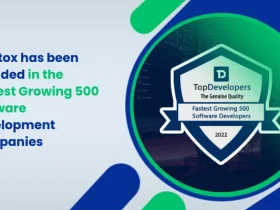
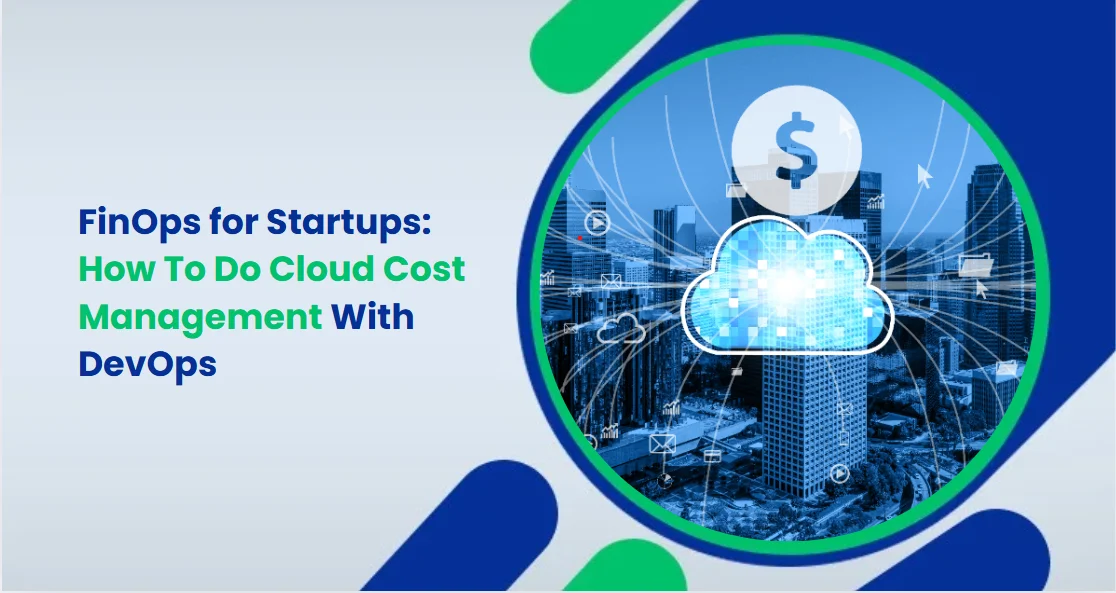

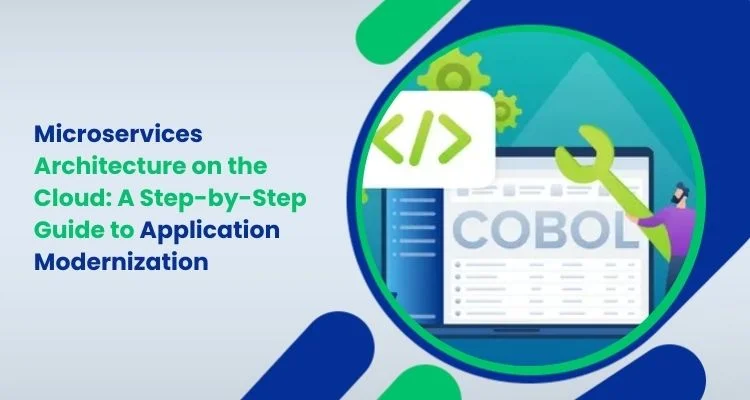
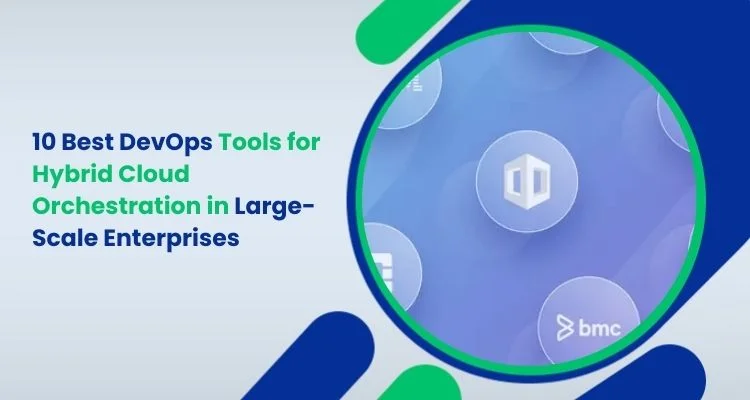
Share your thoughts about this blog!